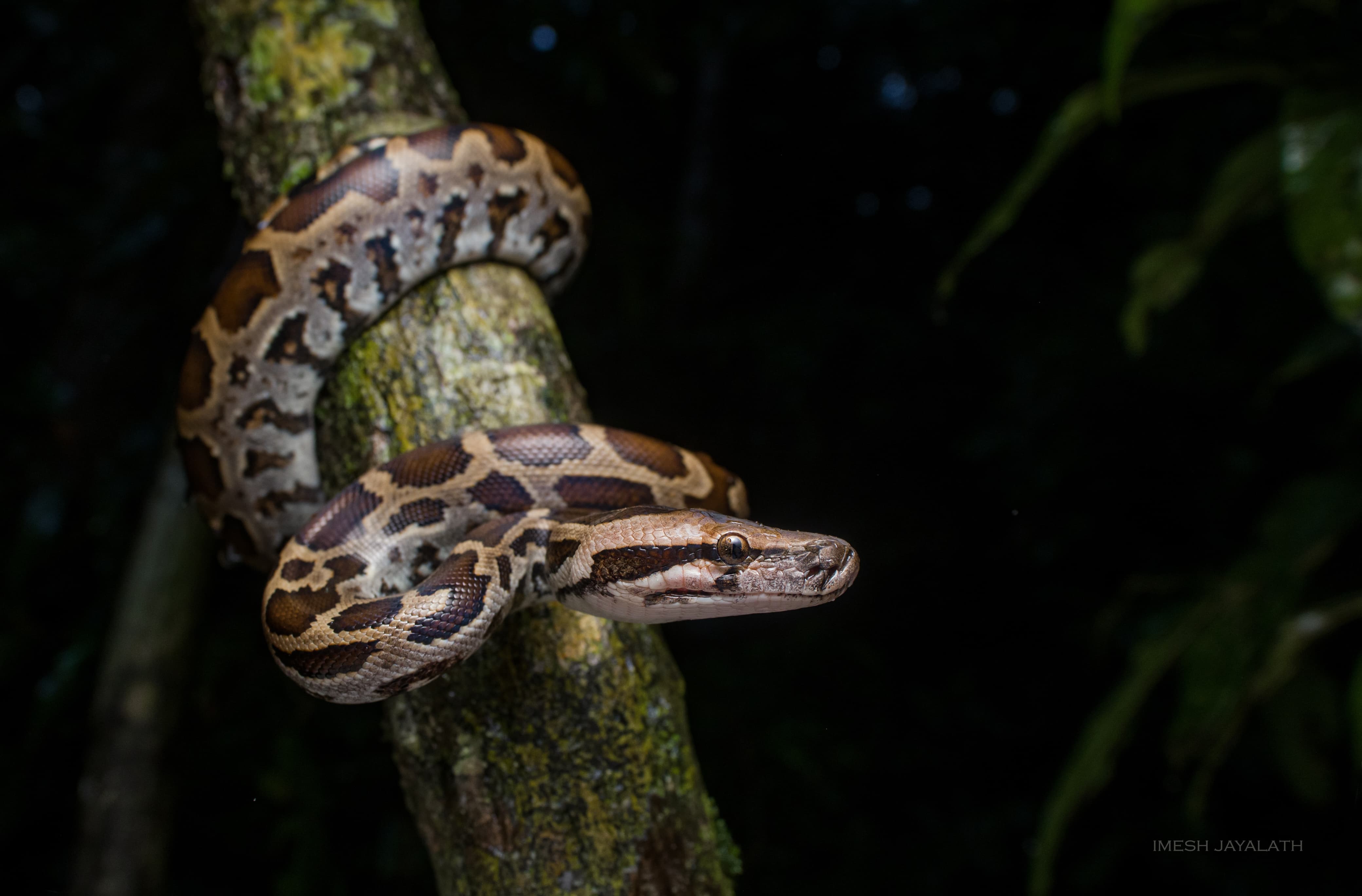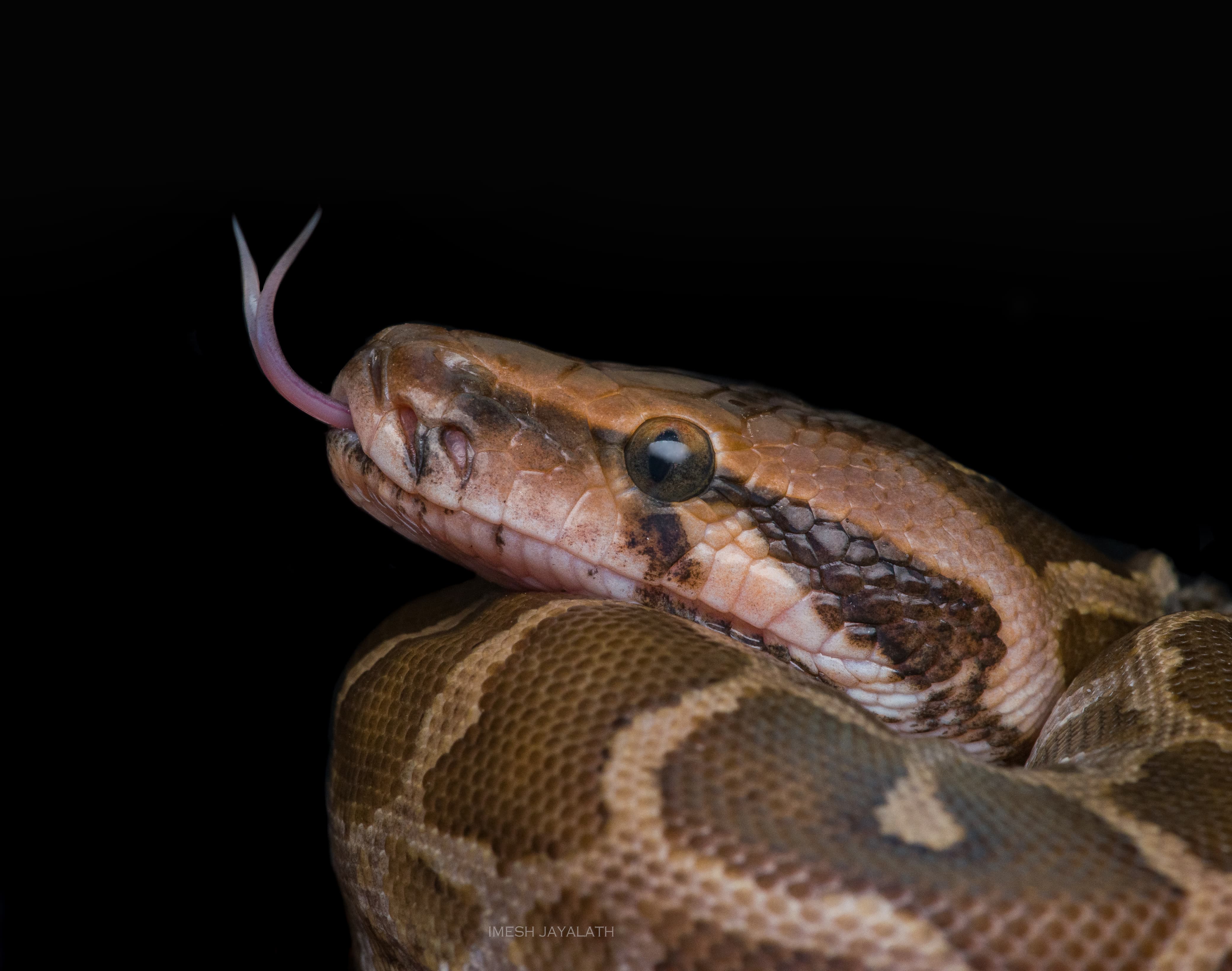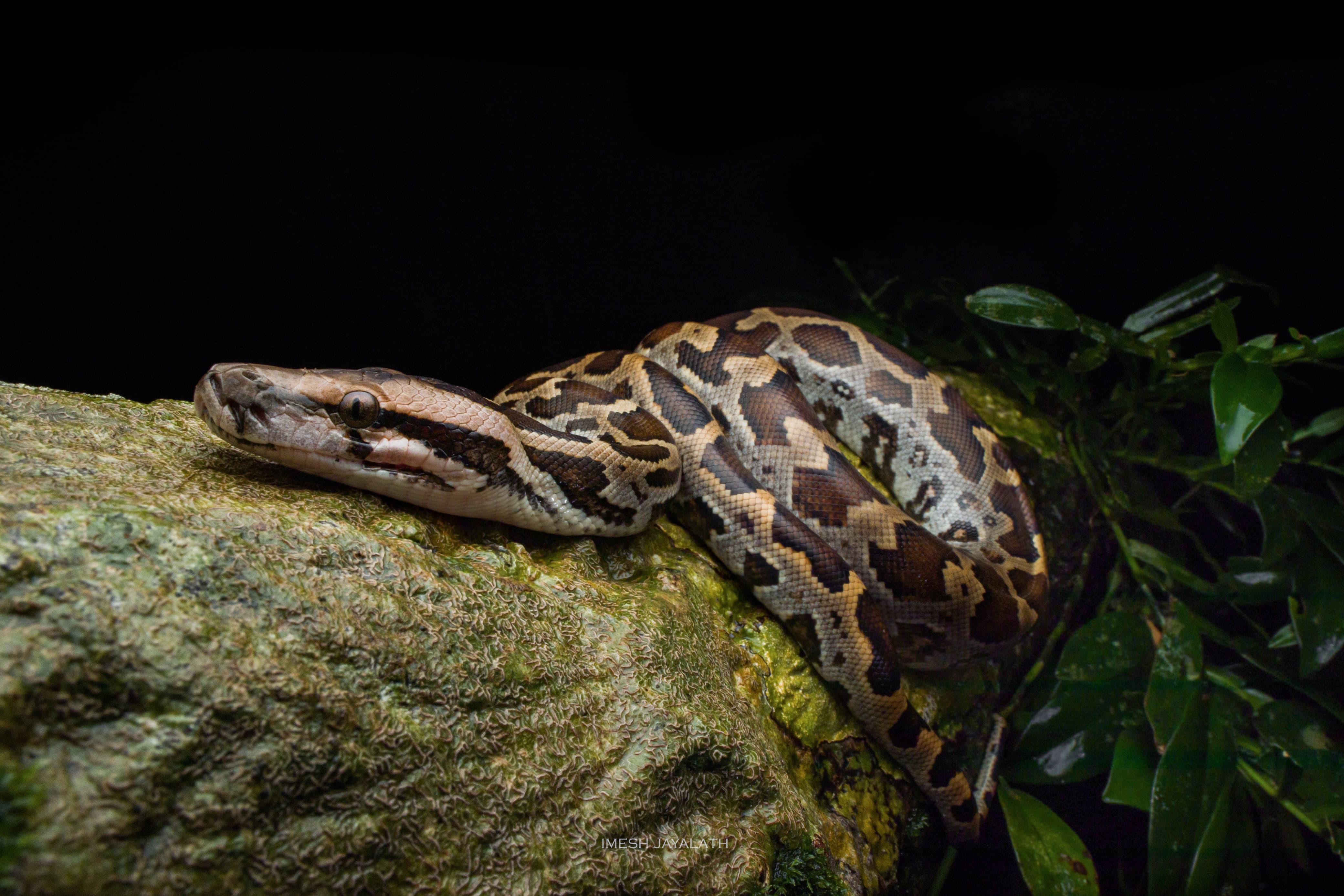
Contributor

Indian Rock python
The Indian rock python is the largest snake species in Sri Lanka. Although it is non-venomous, it can deliver a painful bite with its large teeth. During the rainy and cold seasons, it is primarily active during the daytime, while in the dry season, it becomes nocturnal. It prefers wet habitats such as swamps, streams, and other water bodies, where it can swim well and spend a significant amount of time underwater.

Indian Rock python
The snake often rests in small caves, burrows, or tree holes and is both terrestrial and arboreal. Despite its slow movement, its short tail has excellent prehensile ability, aiding in climbing. The female Indian rock python lays about 10 to 109 eggs. Hatchlings are approximately 50 cm long at birth and can grow to lengths of 2.5 to 4 meters.

Indian Rock python
The species feeds on a wide range of animals, from small mice and birds to larger prey such as deer and even crocodiles. It is equipped with labial pits that allow it to sense heat, enabling it to detect warm-blooded prey. The Indian rock python is found almost everywhere in Sri Lanka, except in the higher mountainous regions.